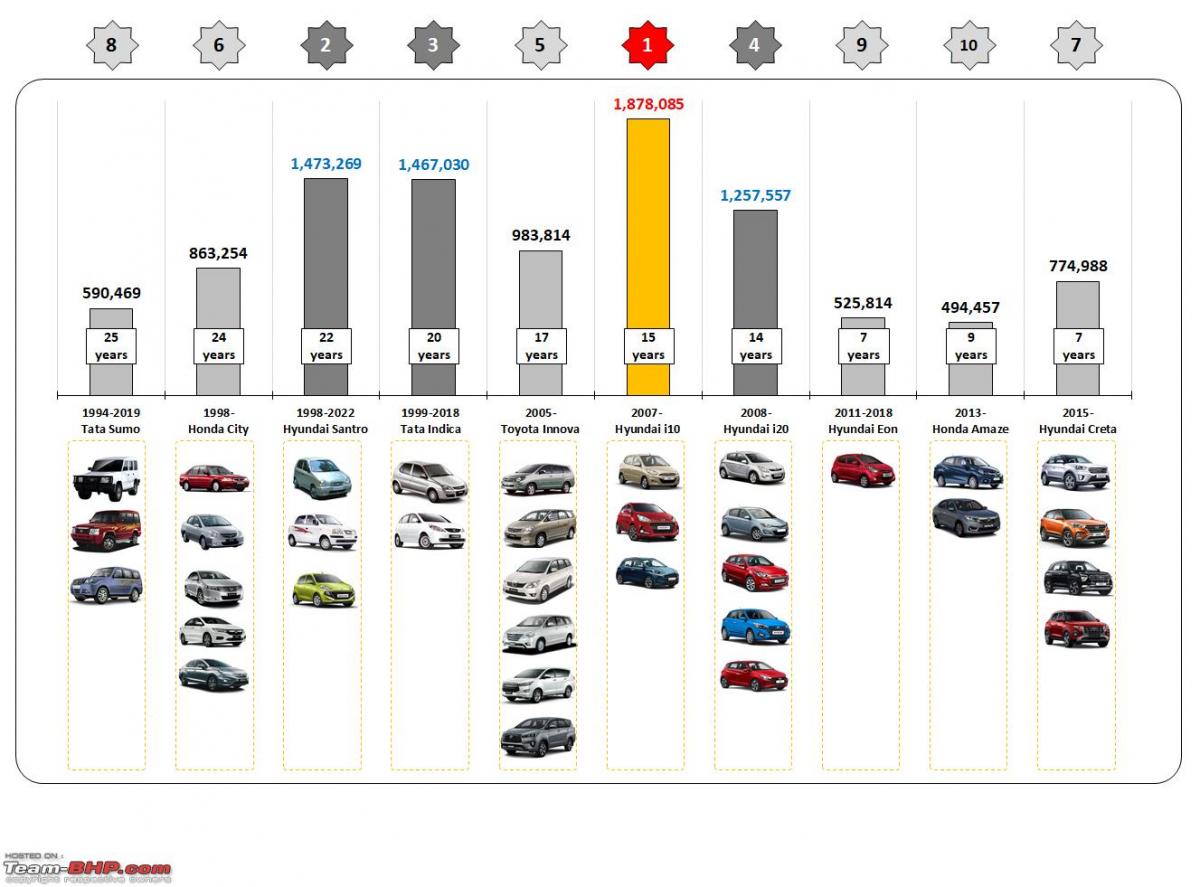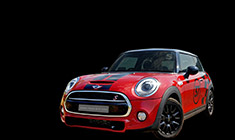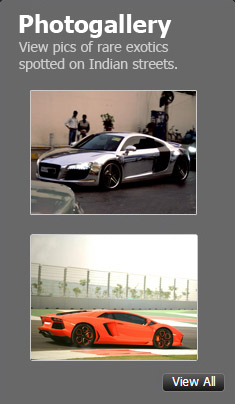News
Top 10 best selling cars in India since the 1990s, post liberalization
Toyota kept on increasing the price of the Innova, and it kept on selling even more, thus defying the price elasticity curve followed by other products in the Indian market.
BHPian pqr recently shared this with other enthusiasts.
Best-selling cars: children of the liberalization era:
In the pre-liberalization era before the 90s, Hindustan Motors (HM), Premier Auto Ltd. (PAL), Mahindra & Mahindra (M&M), and Maruti Udyog Ltd. (MUL) ruled the Indian passenger vehicle (PV) and UV markets. Their products also enjoyed a monopoly in segments, or were the segments themselves, and raked in huge numbers.
Since the early 1990s, many new entrants have entered the liberalized market, including domestic and commercial vehicle manufacturer TELCO (now Tata Motors). Here is the list of the top 10 bestselling products from the manufacturers that entered the Indian passenger vehicle market since the 90s, in the post-liberalization era:

Hyundai has four products in the top 10 list, followed by two each from Tata and Honda, and one single product from Toyota. All three of the top three-selling products are hatchbacks.
‘Million’ club:
Four products have crossed the million-sales mark.
Hyundai i10:

Spanning over three generations, the i10 is the best-selling non-Maruti hatchback in the Indian market and is inching close to the 2 million sales milestone. For 13 long years, the i10 ensured Hyundai’s foothold in the top 10 rankings till 2020. Hyundai also happened to be the first to introduce a sunroof and torque converter transmission as options on the first-generation i10. It was quite popular among female drivers.
Hyundai Santro:

‘Sunshine car’ is a product that has actually transformed the mass market passenger vehicle industry as it taught market leader Maruti the very concept of variants and features in the hatchback segment. The Santro was never able to match Maruti’s fuel efficiency benchmark, but it made up for that with loads of features. The facelift introduced with the Xing suffix was more palatable than the original design of 1998. It achieved its peak sales in 2006 and remained the #2 best-selling car for 5 years. However, the revival of the nameplate in 2018 was a disaster, and the product was discontinued in 2022.
Tata Indica:

‘More car per car’ designed in Italy, the Indica was unquestionably a generation ahead in India. Problems were also plenty, so Tata quickly came up with a revised version called V2. Eventually, it sold well, largely due to its diesel engine and low price tag, for a car with huge in-cabin space. It held the top five positions in the Indian PV market for 12 years, rising to #2 position in 2007. The second generation of Indica, launched alongside it, in 2008, with the Vista suffix, was not that successful.
Hyundai i20:

Spanning over three generations, the i20 brought a premium hatchback experience to the masses. The Europe-centric design was an instant hit among young generation buyers, and for 10 long years, the i20 secured a second slot for Hyundai in the top 10 ranking.
On the verge of joining the ‘Million’ club:
Toyota Innova:

A premium MPV inching towards the million sales mark, says a lot about the product and the Indian consumer’s psyche. Toyota kept on increasing the price of the Innova, and it kept on selling even more, thus defying the price elasticity curve followed by other products in the Indian market. It also proves that Indian customers are not cost-conscious but highly value-conscious. A product will sell well, if it is able to deliver the right value to its target segment.
Honda City:

The oldest nameplate alive and a sedan, still in business, says a lot about the product in its fifth generation in India.
Hyundai Creta:

The Creta is not only one of the annual top 10 best-selling cars, but also the best revenue-generating product in the PV industry. In the Indian PV market, first mover advantage is a myth, and the Creta demonstrates that the best product takes the cake and, at times, decimates the competition. Similar to the Toyota Innvao, the Creta has defied the normal price elasticity curve since launch.
Others in the Top 10 list:
Tata Sumo: Inspired by the Mercedes G-Wagon design, the spacious Sumo was an instant hit when launched in 1994 and was very successful till the end of the 90s. The entry of the Toyota Qualis, Mahindra Bolero, and later Chevrolet Tavera made the following decade difficult for Sumo. The second generation launched to take on new entrants was a big disaster.
Hyundai Eon: Hyundai brought the Eon in, as the Maruti Alto’s killer. The Eon had a much better interior and feel-good factor for that price, but vibrations from the newly developed 814cc engine could be felt from the gear lever. How did Eon perform? Eon was killed in an attempt to kill Alto.
Honda Amaze: A custom-made sub-4m product for India, is more successful with its second generation, which draws upon the global Accord’s design.
Check out BHPian comments for more insights and information.



















